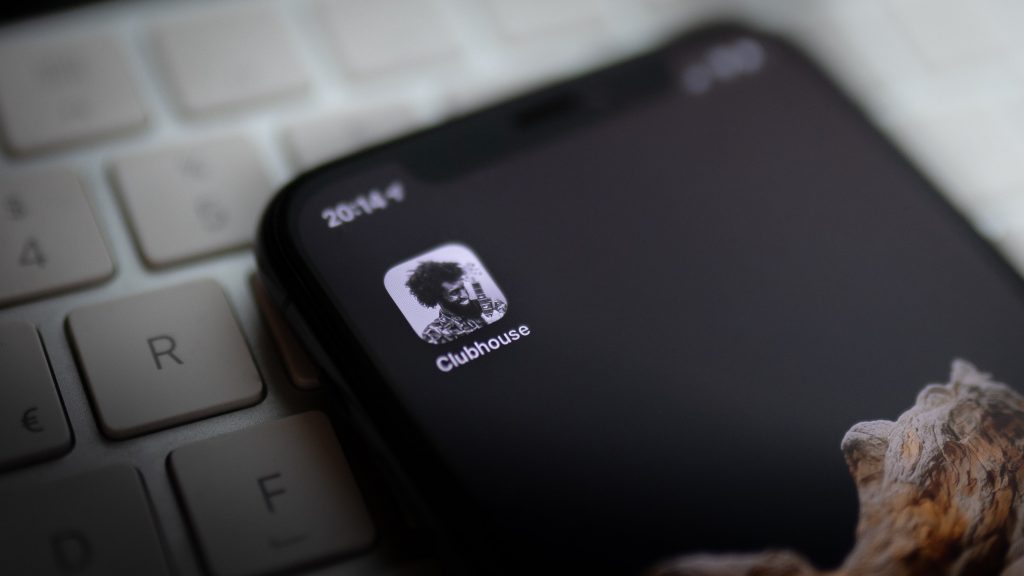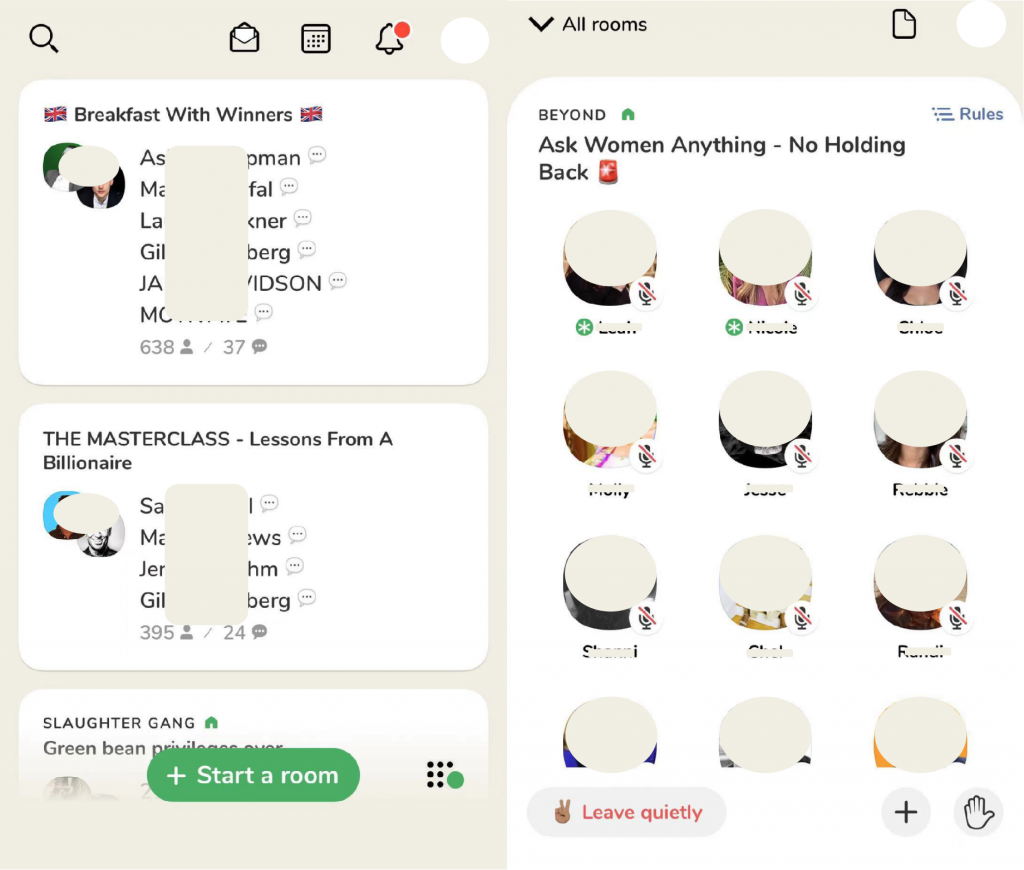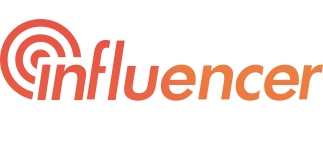Clubhouse: How Does Its Rising-up Inspire Influencer Marketing

Unless you were on Mars without an Internet connection, Clubhouse must have appeared in your sight, once at least, for the last two weeks. Clubhouse, a drop-in audio chat social app more like a real-time podcast, is only accessible through invitations from registered users. Every user is granted only two invites. With a limited user base though, but the popularity among both users and potential users is overwhelming.
Public comments on this social media app are mixed at present. Some see it as just another audio chat app, which is nothing new. While many have been addicted to it and consider it as a new epic social media platform and will reshape the human social networks.
No matter how people think of Clubhouse, it is fact that everyone is debating about it. To most marketers, what matters is how did Clubhouse rise up and achieve such huge marketing traction. How far will Clubhouse go, what kind of product will Clubhouse turn to be, are not our topic, but what can we learn from Clubhouse’s marketing is worth studying for every marketer when carrying out influencer marketing.
What is Clubhouse and how it works?
Clubhouse is a drop-in audio chat social app. Users can join any interested-topic room created by others to have a conversation with them, but through voice only. So the news feed consists of various rooms. And how many rooms will be fed to you depends on how many users you have followed. Your network on Clubhouse decides what content you will receive. A broader network will diversify room feed. Every conversation is real-time and each room is temporary, which means all exchanged information on Clubhouse is ephemeral with no trace left. You can see a clubhouse room as an online forum, seminar, or salon, etc. Clubhouse comes like a real-time podcast. Whenever you want to engage in conversation, you can hand up and the moderator of the room will put you as a speaker from an audience.

Indeed, this chatting form is nothing special in today’s social product market. What makes this app special and attractive is the group of seed users of Clubhouse, ranging from Drake, Kevin Hart, to Tiffany Haddish and now Elon Musk. To new users, getting invited to Clubhouse means, number one, you are on the network of these celebrities, although thousands of people in between apart you from them, and number two, you have a chance to enter a room and talk to someday like Elon, or join elites’ chat as a listener, seemingly you are an elite member too.
Clubhouse is still under beta stage and invite-only. Therefore, the user base has not been scaled. Every invited user will be granted only two invites after registration. The current growth model is very under-scalable and the user base is limited to a small bunch of people.
This Silicon Valley-based start-up was reported it reached a $1 billion valuation when it garnered only 1,500 users, most of whom were high net-worth or with bear a big name. According to Sensor Tower estimates, Clubhouse has gained 3.6 million installs globally so far. The United States leads with 2 million original downloads, followed by Japan and Germany both with over 400,000 downloads.
What marketing lesson we can learn from CH
In terms of product design, there is not much strong distinctiveness in Clubhouse. Then what characteristic pushed Clubhouse to today’s position. To marketers or product operators, the marketing logic behind Clubhouse is obsessive.
Why everyone is rushing into such a normal social app? What made users so addicted to it and share screen-shots of Clubhouse room on Facebook, Twitter? In China, people are even willing to pay over 500 yuan ($77.5) to purchase an invite sold on eCommerce sites. NoxInfluencer has outlined 4 factors, which may help inspire marketers’ marketing strategy.
I: Celebrity Endorsement

Let’s start with a tweet by Tesla-owner at the end of 2021’s first month. On Jan 31, 2021, a tweet of Elon Musk dragged Clubhouse’s traction to a peak. He announced his presence and informed that there would a chat on Clubhouse through his Twitter account. Everyone would be allowed to discuss various topics with him or ask him questions then. As expected, Musk served as a magnet for Clubhouse. Instantly, numerous users flocked into Clubhouse with an intention to talk with this celebrity directly.
Elon Musk is a microcosm of Clubhouse. Celebrities and big names from Silicon Valley, who are seed users of Clubhouse, are natural marketing ambassadors for Clubhouse. Celebrity endorsement is exactly the essence of influencer marketing. In Clubhouse case, this method perfectly attracts users who desire to establish a network with these guys or engage with them. Namely, for some people, joining Clubhouse symbolizes a social identity, representing, you know, THE network circle.
II: Psychological forces in users
Another key point of users’ obsession with Clubhouse lies in some psychological forces. Clubhouse’s design and growth approach perfectly hit, intentionally or unintentionally, human psychological mechanism. How users and potential users behaved towards Clubhouse is definitely worth to be studied by social psychologists. In our influencer marketing campaign, leveraging user psychological mechanism well can make difference to our marketing outcomes.
High Entry Barrier
Think of the requirement to join Clubhouse. Firstly, you need a friend who has access to Clubhouse. Plus, he or she is willing to spend one of the two precious invites on you. It is a test of your networking capability. Alternatively, directly purchase an expensive invite. However, to most people, rare invites represent a kind of leverage in their social mission. Selling this fancy networking resource won’t be an option.
To potential users, getting invites can demonstrate their networking capacity, particularly when the original invites grew from those famous seed users. As social creatures, how can human beings deny the lure of two new invites once invited?
To Clubhouse, such a tight user growth approach guarantees high user retention. Because during invite passing, old users have help Clubhouse filter away those who don’t fit Clubhouse. One-by-one user articulation creates a closely-united user base.
Draw a Hanging Garden
Of course, this near-scarcity marketing approach only is not enough to generate massive user growth. You should draw a Hanging Garden for those who are inaccessible to Clubhouse and let them believe that it is worth an endeavor to get an invite.
So, who is the drawer and how?
First, you should tell them Clubhouse is full of big names. Joining in Clubhouse makes you closer with Musk, Zuckerberg, and beyond. More importantly, to some extent, you are a member of an elite circle. Isn’t cool to casually click into a room, on a Sunday morning, and listen to a gossip chat among those celebrities?
On the other hand, KOLs are the best drawer. Referring to part I: celebrity endorsement. Musk spoke for Clubhouse, “Here I am. Come and let’s have a conversation.” Simple and straight. Clubhouse showed to all the fact that Clubhouse is filled with celebrities. It is enough to let everyone flock into it.
Self-marketing behaviors by users: vanity, attention-grabbing, FOMO
Another success of Clubhouse’s marketing is users’ self-marketing behavior. After entry barrier tightening, Hanging Garden drawing, the rest of the marketing efforts would be made by users.
1. Vanity
Keep in mind that well-leveraging customers’ vanity will bring great marketing performance
For some users, joining Clubhouse is far from ending. There is the last step to take in their social mission: telling everybody that their decision is correct, that they have become the elite members who have opportunity to engage with those real elites in this society.
Without self-bragging, how to prove that their efforts to begging an invite before are right? Without showing-off with screenshots, how to inform others that their appetites are the same as those elites?
Of course, most users are praising Clubhouse from the bottom of their hearts.
2. Attention-grabbing and FOMO
There is still a highlight in Clubhouse. Its product is good at grabbing users’ attention by FOMO (Fear of Missing-out). All content on Clubhouse is ephemeral. If several famous entrepreneurs are talking in different rooms simultaneously, it is possible to see someone runs Clubhouse on his iPhone, iPad, iPod Touch at the same table. It brings us back to a 20-year-ago Silicon Valley, where some people were busy attending various technology salons all day. And humans often prefer to share something that they spend most time on. It is human. It is how user psychological mechanism works.
Conclusion
Let’s recall the outlined key factors we can apply to our own influencer marketing campaign.
Number one, celebrity endorsement, which is exactly the essence of influencer marketing.
You’d better let your partner influencer use your product personally, just like Elon Musk, increasing the authenticity of endorsement.
Number two, leverage users’ psychology mechanism well.
Increase the difficulty to access your product, but prove that your product is really good. Otherwise, only scarcity marketing won’t work. For example, only through the unique privilege code given by the influencer, can customers purchase your product with a huge discount.
Moreover, if the purchase access is limited and customers can only purchase your product through the influencers everyone admired. Isn’t it worth showing off your products?
Most importantly, your product itself is the most success factor. Customers’ self-marketing is most desirable for brands.
Thanks for reading. Until next time.
